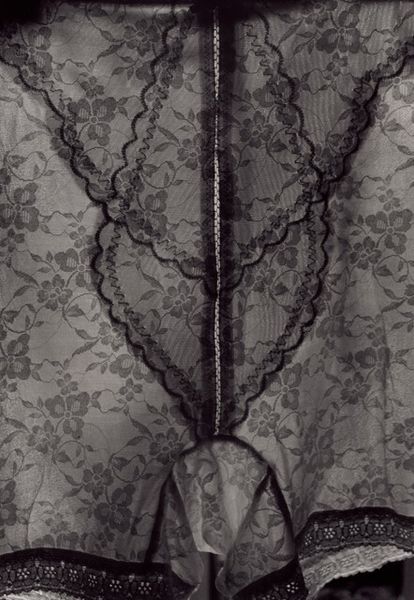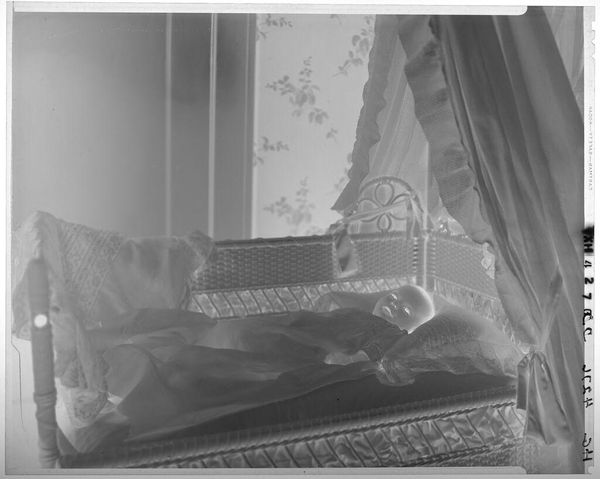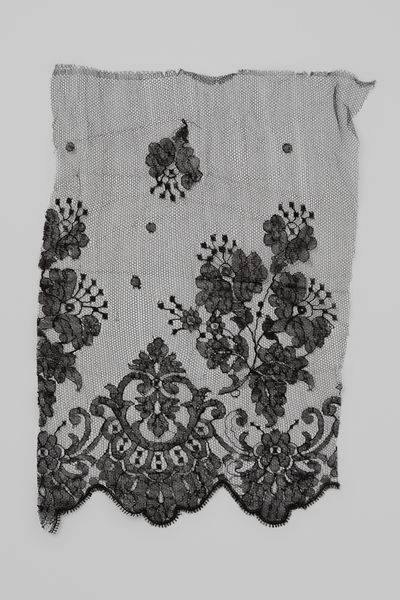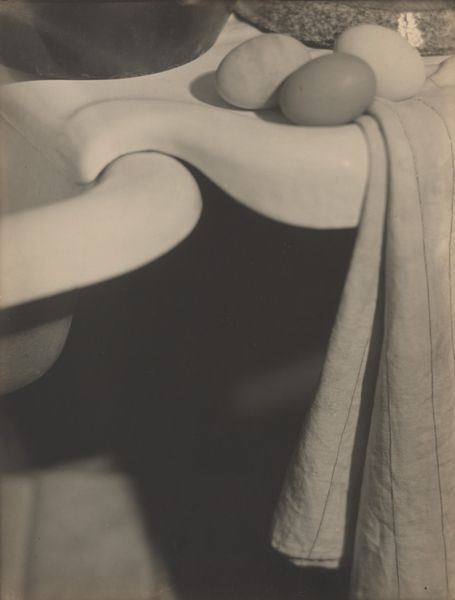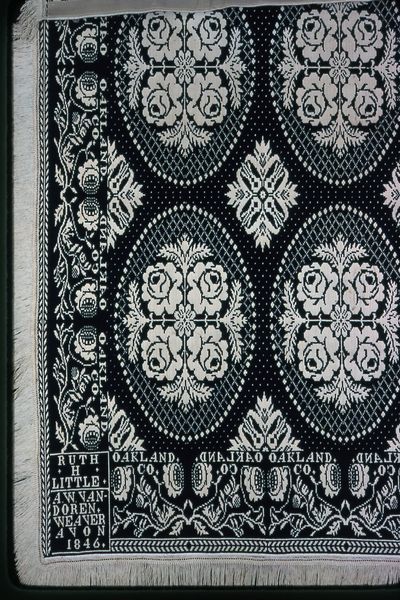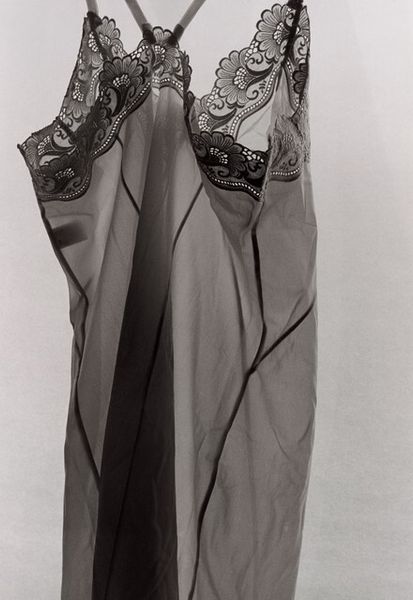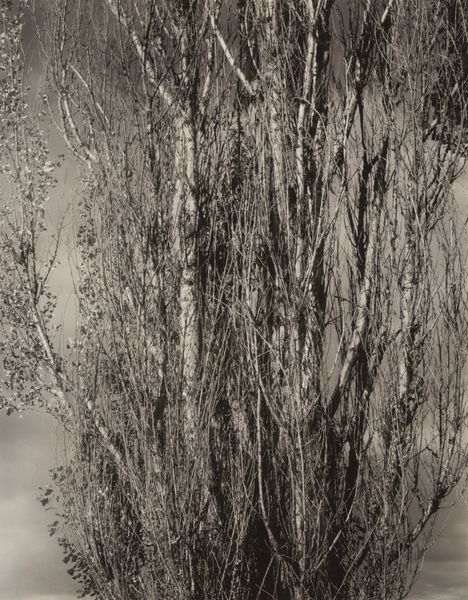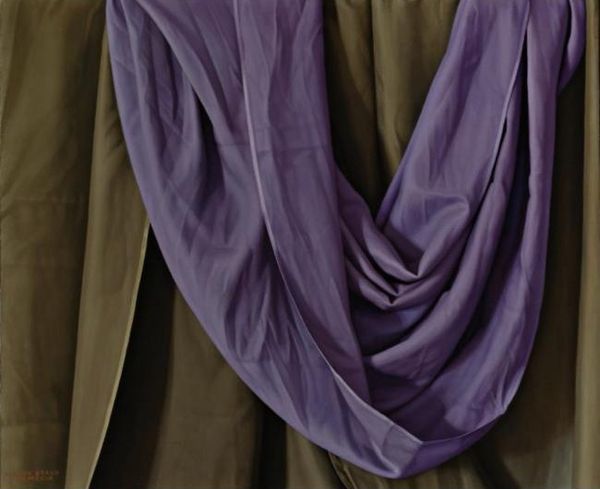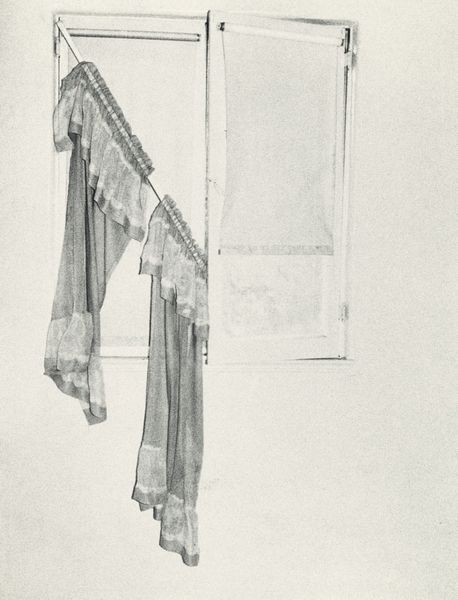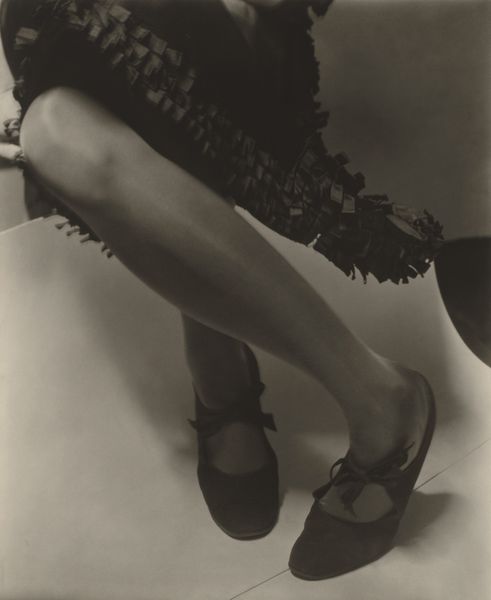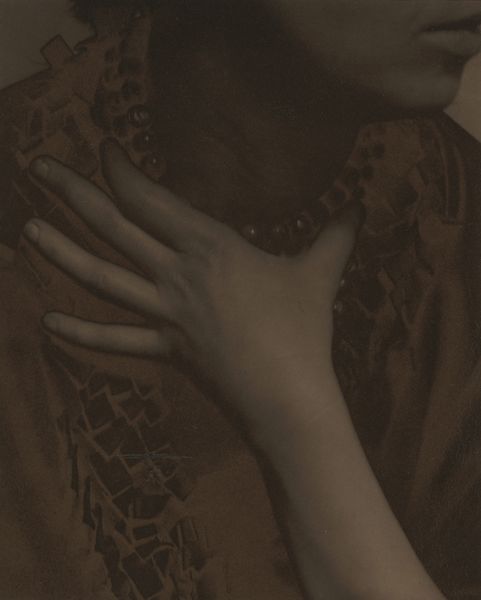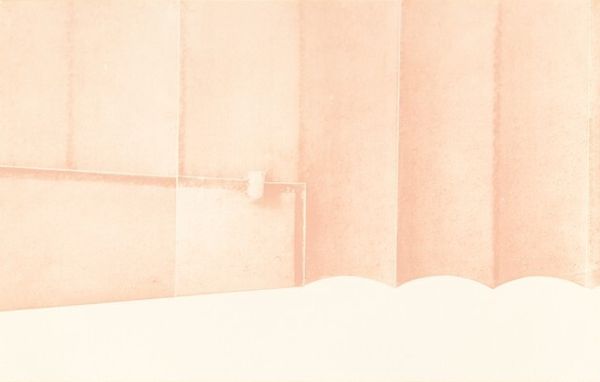
photography
#
black and white photography
#
sculpture
#
black and white format
#
photography
#
monochrome photography
#
monochrome
#
decorative-art
#
monochrome
Dimensions: image: 23.6 x 14.3 cm (9 5/16 x 5 5/8 in.) sheet: 23.9 x 18.1 cm (9 7/16 x 7 1/8 in.)
Copyright: National Gallery of Art: CC0 1.0
Curator: Here we have Robert Frank’s “Fabrics—40 Fotos," a gelatin silver print from sometime between 1941 and 1945. Editor: It has such a somber, quiet mood. The composition leads me around like a path through a dream – all intricate detail, shifting planes, and varying light. Curator: The play of light and shadow is masterful, accentuating the tactile qualities of the fabrics. Note how the formal elements—line, shape, and texture—converge to create a composition that verges on abstraction. It’s more than just a photograph of fabric; it's an exploration of visual language itself. Editor: Indeed, and to consider the materiality further: it's fascinating to think about the unseen labor embedded within the fabric itself, the many hands that spun the thread, wove the patterns. Photography too is, fundamentally, a mechanical reproduction, so that intersection between manual and machine production is really powerful here. Curator: Precisely, it provokes that very dialogue. The tonal range in the monochrome also pulls you in, with sharp lines versus areas that softly dissipate. A great level of consideration and technique elevates something mundane into art, inviting endless contemplation on what might first seem like ordinary subjects. Editor: Ordinary objects given the status of relics…or documents. And with a history like this, created during wartime, one has to wonder whether the fabrics and their photographic record might memorialize everyday life when those things could be lost, unobtainable. The scarcity of basic materials would heighten the value of luxury items like decorated textiles. Curator: Yes, it presents an interesting dichotomy. Frank offers a stage, and we, the viewers, are tasked with finding the actors and the drama—and the inherent artistic qualities speak for themselves. Editor: Well, that does highlight the ways the economic context shifts the way these are to be interpreted, or what gets elevated within art and history, by the maker and the institutions alike.
Comments
No comments
Be the first to comment and join the conversation on the ultimate creative platform.
